We are all aware about Yogacharya T.Krishnamacharya being a pioneer in using yoga (specifically asana and pranayama) for therapy and well-being. But little did we know that he was a great scholar of our sacred knowledge and traditions. One of his long-standing students, Raghu Ananthanarayanan, has put together an interesting note about what is dhyAna and the interconnected nuances around it.
He has used the device of an innocent conversation between a young, curious child, Chiku who is Gayatri Iyer, and an elderly teacher Rita, just like the dialogues that used to take place between student and teachers at ashrams. In my discussions with Raghu who is Rita in the writings, I learnt how symbols and rituals of our Hindu culture have been misinterpreted for long, and once you know the real meaning, you can only marvel at the profundity of the entire meaning and how it is part of the larger divine order.
The number of wellness and meditation camps or retreats going on these days is quite mind boggling. Each of them talks about dhyAna and concentration being the central way to kill stress and take care of all your worries. One of the angas of yoga is dhyAna and the Asana-prANAyama are geared towards helping you to be in the state of dhyAna. But what is dhyAna?
Rita: The word dhyAna is getting interspersed with many terms like meditation, mindfulness etc. But I want to go back to my parent’s generation or even before that when they used to go to the little mandapam at home to sit quietly, or perhaps focus their mind on their ishata deva and even have a conversation with their deva. It is quite poignant because there are many thoughts that one cannot speak about to anyone and only to the Lord. Once our thoughts die down and we let a deeper intelligence come through, we can experience deep healing. We can seek divine guidance if we choose to. This is what dhyAna meant at a very simple level. It was taken for granted that this quiet time with oneself is an integral part of the day.
Chiku: I see, so the relaxation techniques on apps that help you focus and meditate is also called dhyAna?
Rita: As I said there is a huge gamut of techniques under this heading and even J. Krishnamurti has talked about meditation from his direct experience. But for simplicity we will restrict our discussion to what does the yoga sUtra-s say about the practice of dhyAna.
Chiku: So, what do the yoga sUtra-s say?
Rita: The simplest of all definitions is given in the 3rd chapter, the vibhUtI pAda; saying once my mind has been pulled back in pratyahara, where no external trigger can influence my mind, I have a choice to direct my mind to something. The first step is to direct the mind towards an enquiry of my choice. This enquiry deepens into dhyAna.
Next, if I stay with this enquiry the sense of self slowly fades away and becomes non-existent. Though some of self remains, it is silent. This then deepens the state into samAdhi, where my mind is completely absorbed on the object that I am without any disturbance whatsoever.
Chiku: But what do the sUtra-s say about the object of enquiry?
Rita: The sUtra-s recommend several areas of focus. Starting with an enquiry into it, then goes on to recommend paying attention to objects, understanding the world around and delving into one’s dreams in the first chapter. The second chapter clearly states that you enquire into your vAsana-s and samskAras i.e., the seeds of erroneous perception and action. By this continuous enquiry and attentiveness you will burn these seeds. The second chapter also encourages you to be attentive to your body and breath, to the way you relate to food and your sensory engagement with the world. The third and fourth chapter go into many more esoteric and transcendent areas of enquiry.
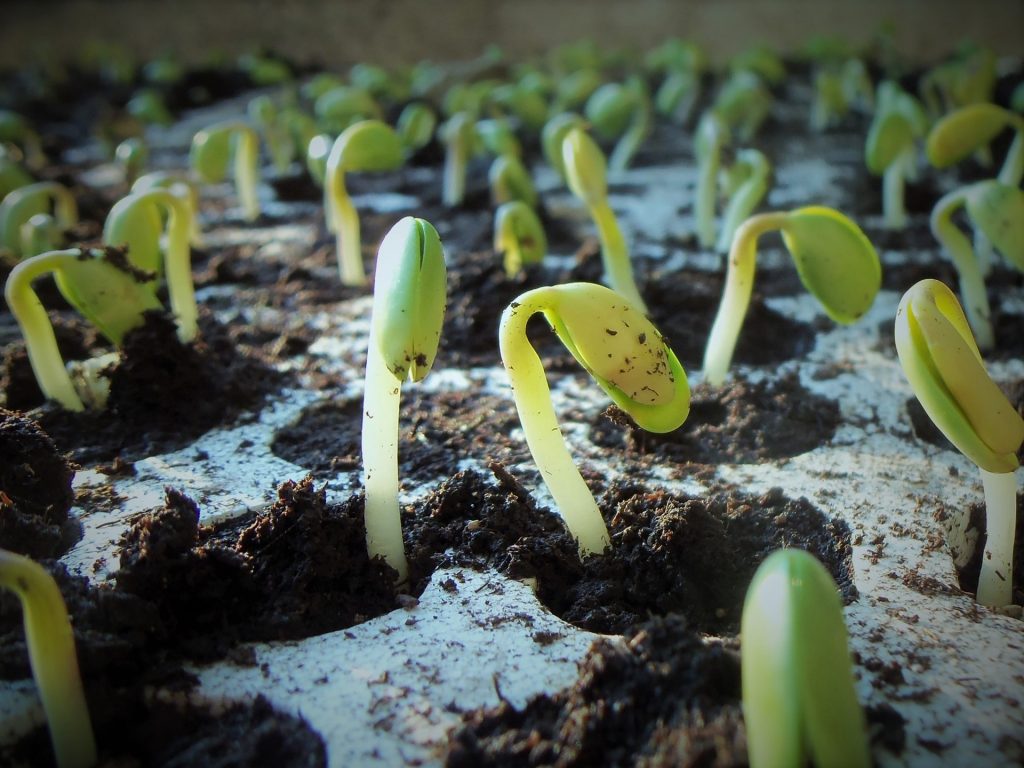
Chiku: What are seeds, the samaskAra and vAsana you referred to. That seems to be a very practical recommendation?
Rita: samskAra are the habitual patterns that emerge out of the vAsana-s. The analogy used in the sUtra is that of a tree that grows out of a seed and becomes a huge beautiful sight. One’s conditioned patterns are like the seed. They are latent but wait for the right time to unfold. Like the tree that gives seeds to keep perpetuating itself, every time the vAsana manifests as action, it reinforces the seed. The seeds become entrenched and the expression that comes out of this seed develops deep roots. So, if the seed is burnt through the attentiveness of dhyAna, then I am free of all these old patterns and disturbances. This is the central practice of yoga. By burning away the seeds that cause erroneous perception I gain a mind which becomes clear and undisturbed. And therefore, I can then direct this powerful and unconditioned mind to anything I want. This mind will be capable of accurate perception.
Chiku: That’s great. So I can understand science and math better! I can even play games or appreciate art more deeply. Then what do these meditation apps and so on do?
Rita: Before you take to the field and play a match don’t you do some warm ups? yoga looks at the common person and says “this mind needs simple exercises to become capable of the more intense practices like pratyahAra, dhAraNA and dhyAna. They technically fall under the category of bhavanA. For e.g. if you want to become a strong athlete, you will practice some specific exercises for various sets of muscles. You will then practice your favorite event, like high jump for instance. Similarly, bhavanAs are mental practices or visualizations to relax yourself and train your mind to be attentive. Krishnamacharya said that the object of dhAraNA must be real and not any vikalpa (imagination). Most of the practices recommended in the apps, or through guided meditation are forms of visualization to help take the mind off something. So, it is important to distinguish between a real object of enquiry and a fantasy. Thinking that visualization is real dhAraNA is a mistake.
Chiku: I remember a sUtra: svAdhyAyAt ishta devatA samprayogah, so is ishta devatA an object of imagination too?
Rita: No, when I do svAdhAyA I get an insight into my deepest gifts and profound capabilities. The ishta devatA that really evokes me will be deeply connected to these gifts. devatA is not a mere image painted by artists like Ravi Verma! They are my inner energies and in a light form which I experience through my svAdhAayA. I get closer and closer to my true self and my inner processes, which are usually vague and dreamlike, get clearer. Contemplating on the statements one finds in the darshaNa, the writings of true Seers is a great help too. Through cultural conditioning we will tend to give these things, certain specific forms. We know many people who go into a deep state of dhyAna talk about seeing a light in the form of Krishna etc.
Chiku: I see, I have experienced some of it when I sit quietly after prANAyama.
Rita: Yes, after prANAyama if we sit quiet, we can sense our prANA in an energy form, or some feeling of lightness or sensations etc.
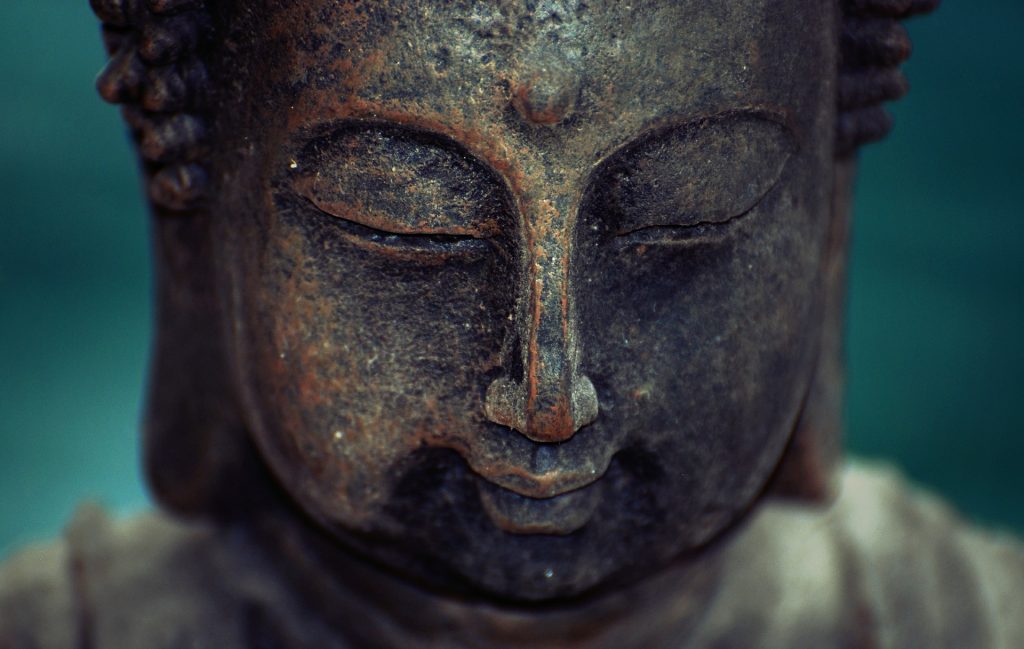
Chiku: It is more experiential rather than descriptive, no?
Rita: Yes, you begin to feel elevated or are at least in a different state of mind. Sometimes even Ananda.
Chiku: If we do dhyAna on an object of enquiry, the grip on that object or the vAsana that makes me drawn to the object will burn away right?
Rita: No ChiKu, the seeds burn away only if the object of my enquiry is my vAsana.
Chiku: Then what are samskAra?
Rita: A samskAra is the habitual pattern in which my vAsana expresses itself. The seeds push me to act in a certain way or habitual pattern. This conditioned action pattern is samskAra.
Chiku: But how does the hold of the vAsana or subtle pattern reduce through dhyAna? What happens?
Rita: Chiku, are you asking me for a scientific explanation?
Chiku: No, I have experienced some reduction on certain patterns, new patterns being formed etc. But to explain it to someone is very difficult because one only experiences it or observes it.
Rita: It is very simple, let me try and explain it through a Sufi statement which is used to explain dhyAna. dhyAna is just like the cat watching the mouse hole waiting for the mouse to come out.

There is a focused attention which the cat is doing on that hole, that attention is dhAraNA. dhAraNA will take you to dhyAna. dhAraNA is the only activity I can do. I do not “do” dhyAna, I do the choosing of the focus area. The depth of the focus keeps increasing as I “stay with” the enquiry. The intense observation has energy, it is called dhyAna agni. Because this observation is subtle, intense and like a laser beam it reveals the entire action of the seed as it unfolds. This seeing thus causes profound insights. Finally the prANic energy locked inside the seed is released.
Chiku: Like the cat is getting ready for action?
Rita: Yes, but very quietly. Now, if I watch my own patterns like the cat watching the mouse, not to catch it or do anything, but just to see how it unfolds. From that very quiet space, if I observe very carefully, won’t it change?
Chiku: Hmm..Yes, it will. I will have a deeper understanding of myself
Rita: True, like the triggers of certain patterns, the origin of it etc. will become clear to you. The more I become conscious of it, it does not become an ‘unconscious compulsion’.
Chiku: So, the strength of the prANA on that pattern that is marred by compulsive feelings, actions and thoughts associated with a seed will vanish.
Rita: Yes. Just close observation itself will burn the seed, the dhyAna Agni will burn it.
Chiku: So, the potency of the seed will reduce. But what if the seed has grown into a full-blown tree?
Rita: You cannot watch the patterns when it is a full-blown tree. When the patterns are full blown, you can only at best control it because it has taken over the psyche at one level. Then I can become aware of the consequences of the action and merely control myself. This actually means I am at conflict with myself. However, after the situation has passed, I can take up the whole experience for dhAraNA practice. I can see what propels me to act in a particular manner, what external triggers cause compulsions to act in a certain way and so on. If this enquiry is intense and subtle and not just seeking explanations and justifications, it will penetrate the deep layers of conditioning, what is often referred to as the unconscious. No other action is called for, this intense and insightful seeing will end the pattern.
Chiku: What if I am acting out the inner patterns?
Rita: Then be an adult and take responsibility for the action. Let me use the language of the yoga sUtra to go over this again. Ordinarily we become conscious of our actions at the manas level (the level of the mind that is planning and is engaged with the sensory world) and when my triggers are full blown or the udAra level, I am swept by a surge of emotions like a ship in a storm. Then it is tough for me to get a measure of myself, but later as you reflect deeper you would understand the process in your body first and how did I respond etc. This seed has grown and unfolded in the world through your responses.
Chiku: But how can I start observing these patterns?
Rita: Simple, start with your body! You will start experiencing tensions in your body, because these emotions lodge themselves in the body first. If you become more and more sensitive to the body, then you can trace back to the trigger. The whole process starts to become clear, because the next time you can be aware of your bodily responses earlier. You are ahead in the game this way and there is no need to get into a conflict with yourself when the reaction is full blown. Once you have a complete insight into the whole process, the energy of that process is finished.
Chiku: How is nidhIdhyAsana different from dhyAna, is it closer to dhAraNA ?
Rita: nidhIdhyAsana is doing dhAraNA on understanding the words that are being told to you by somebody. So, it starts with shravaNam, mananam and nidhidhyAsitavyam. So, shravaNam is to listen very carefully to what your teacher is saying.
Chiku: Why should I listen so carefully? So many people say so many things
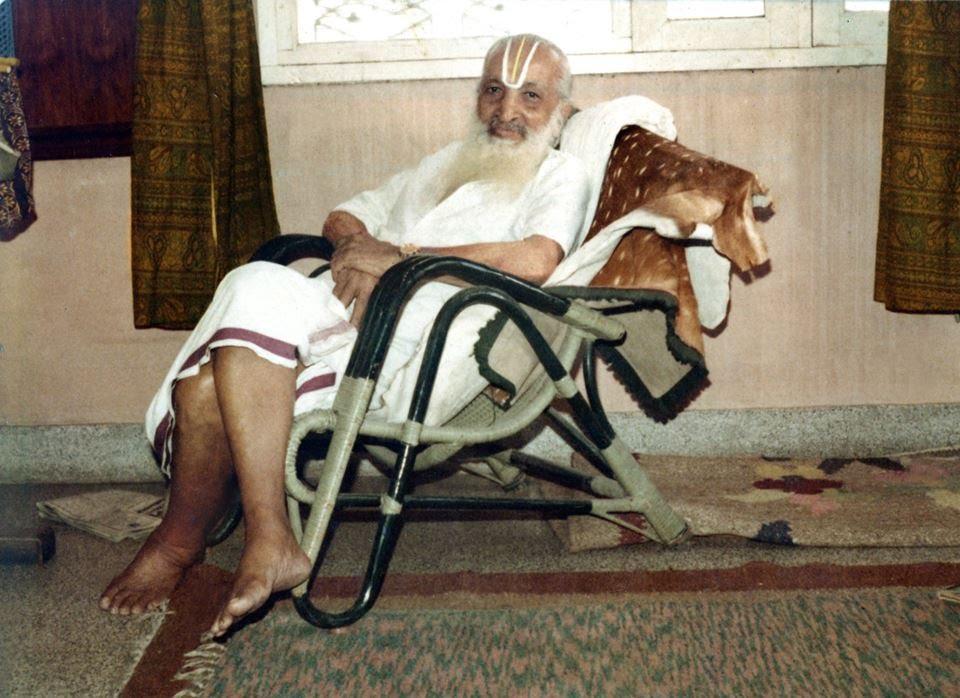
Rita: The potency of the meaning is not only in the words being spoken. Listen to a person who is an Aptavachana like Krishnamacharya, an embodiment of yoga. When he spoke, his words were not mere words but carried the energies of the sAdhana he had done. The words were a wholesome experience for me, in the sense that it impacted my mind, body and senses; this is shravaNam.
mananam is when I take in some of these things; for e.g. if I took the meaning of a sUtra that Krishnamacharya has explained then mananam for me is a process where I contemplate on what it may mean for me, some things will happen to me and I will remember oh this is what was said. So, some part of my mind is constantly engaging with discovering the artha, artha means the actuality of what this word refers to in my life. nidhidhyAsitavyam is when the meaning starts transforming me and I can embody the meanings of the statements that I have understood. I have internalized the meaning and it has become embodied knowledge.
Chiku: Must the physical body also change for the learning to be complete?
Rita: Yes. The yoga sUtra-s clearly say so. Remember we are speaking about ourselves, how we create our own duHkha and how we can end it.
Chiku: What are the other qualities of the object for dhAraNA?
Rita: The object you focus attention on will impact your mind, so that is why all our deities are sculpted with balance, proportion, aesthetics etc. Even if you focus on a lamp, the lamp should not flicker and so on. If I want to quieten my mind, then I cannot go to an ocean side with rough waters. The object along with the space where I am placing the enquiry etc. are equally important. All of it is ensured so that only sAtvika guNA is evoked in me. That is the key, the object of enquiry has to be sAtvic and preeti; balanced, calm, and joyous. Thus, an Aptavachana becomes so important. So, the same words coming from Krishnamacharya and coming from someone else will have different impacts on me.
Chiku: So, the choice of teacher is so important.
Rita: Yes, you can even choose nature, music, dance, literature etc. as your teachers.

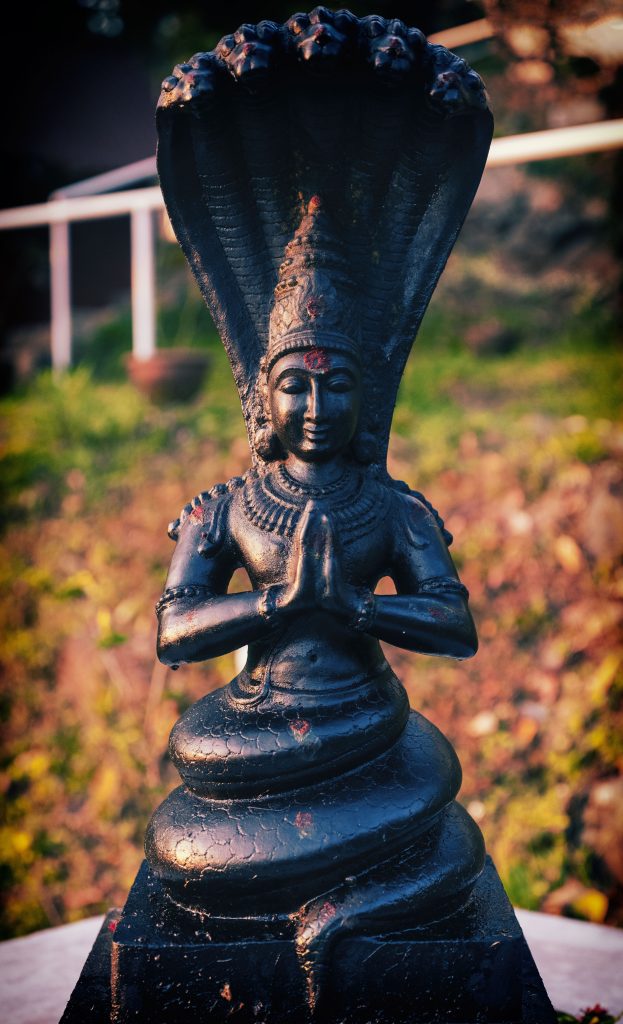
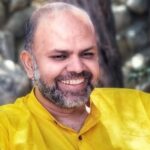 Anoop is a student of Yoga, an entrepreneur, a coach and a father of two young boys. He has led successful leadership stints in both the corporate and non-for-profit sectors. On encountering the country’s water/farmer crises at close quarters, he decided to pause and examine the impact various ‘isms’ – capitalism, colonialism, etc., were having on us as individuals, families, the society and the environment at large. This quest led him to formally engage with traditional Indic knowledge systems while also learning from the latest advances in science – about our physical and mental wellbeing, importance of body and mind work in healing trauma and the urgent need for a conscious rebuilding of family / work / social structures if we have to thrive individually and collectively. Insights, frameworks and processes gleaned from these on-going studies, an anchorage in his own personal practice and his wide-ranging experiences is what Anoop brings to facilitation/coaching spaces in Ritambhara and his various professional engagements.
Anoop is a student of Yoga, an entrepreneur, a coach and a father of two young boys. He has led successful leadership stints in both the corporate and non-for-profit sectors. On encountering the country’s water/farmer crises at close quarters, he decided to pause and examine the impact various ‘isms’ – capitalism, colonialism, etc., were having on us as individuals, families, the society and the environment at large. This quest led him to formally engage with traditional Indic knowledge systems while also learning from the latest advances in science – about our physical and mental wellbeing, importance of body and mind work in healing trauma and the urgent need for a conscious rebuilding of family / work / social structures if we have to thrive individually and collectively. Insights, frameworks and processes gleaned from these on-going studies, an anchorage in his own personal practice and his wide-ranging experiences is what Anoop brings to facilitation/coaching spaces in Ritambhara and his various professional engagements.
 Priya is a Yoga therapist in the Krishnamacharya tradition. She adapts Reiki & energy work, Vedic chanting, life coaching & Ayurvedic practices in her healing spaces. She is committed to nurturing collectives that have the praxis of Yoga at their heart.
Priya is a Yoga therapist in the Krishnamacharya tradition. She adapts Reiki & energy work, Vedic chanting, life coaching & Ayurvedic practices in her healing spaces. She is committed to nurturing collectives that have the praxis of Yoga at their heart. Anisha has been on an exploration to understand herself through yoga for the last 15years which led her to teaching yoga, yoga therapy and inner work through yoga.
Anisha has been on an exploration to understand herself through yoga for the last 15years which led her to teaching yoga, yoga therapy and inner work through yoga. Apoorva chanced upon Yoga in her early 20s. A spark was lit within and there was no turning back. Her exploration led her to the Krishnamacharya tradition more than a decade ago. Curious about human behaviour and what drives it, she was thrilled when her search ended (and also began) when she first came upon the Yoga Sutra, which illuminated a path towards answering many questions that had been held for a long time.
Apoorva chanced upon Yoga in her early 20s. A spark was lit within and there was no turning back. Her exploration led her to the Krishnamacharya tradition more than a decade ago. Curious about human behaviour and what drives it, she was thrilled when her search ended (and also began) when she first came upon the Yoga Sutra, which illuminated a path towards answering many questions that had been held for a long time. Anita is a yoga teacher and therapist in the tradition of Sri.T.Krishnamacarya and Sri T.K.V. Desikachar, a Reiki practitioner and a Life Coach. She is also the founder of Vishoka, a center for learning Indic and energy-based frameworks for living and healing. Her deep concern for human suffering and the problems of unsustainable living kept her on the path of seeking an integrated approach to looking at life, living, learning and healing.
Anita is a yoga teacher and therapist in the tradition of Sri.T.Krishnamacarya and Sri T.K.V. Desikachar, a Reiki practitioner and a Life Coach. She is also the founder of Vishoka, a center for learning Indic and energy-based frameworks for living and healing. Her deep concern for human suffering and the problems of unsustainable living kept her on the path of seeking an integrated approach to looking at life, living, learning and healing. Ankit is a seeker in the wisdom traditions of India. The core of his work includes creating dialogic spaces where people can look within and see the connection between their inner and outer lives. Inspired by the likes of Gandhi, Aurobindo, Vivekananda and Guru Gobind his experiments in service took him back to his roots in Punjab where he is creating a community-led model of higher education which is open, inclusive and accessible for all. Ritambhara for him is a space for engaging in a community which is committed to a DHramic life. He anchors his work of learning and leadership in the Antaranga Yoga Sadhana and the humanistic wisdom of Mahabharata.
Ankit is a seeker in the wisdom traditions of India. The core of his work includes creating dialogic spaces where people can look within and see the connection between their inner and outer lives. Inspired by the likes of Gandhi, Aurobindo, Vivekananda and Guru Gobind his experiments in service took him back to his roots in Punjab where he is creating a community-led model of higher education which is open, inclusive and accessible for all. Ritambhara for him is a space for engaging in a community which is committed to a DHramic life. He anchors his work of learning and leadership in the Antaranga Yoga Sadhana and the humanistic wisdom of Mahabharata.